(RNS) — Tucked away on a hill beyond a vast commercial landscape are the first two Dharmic temples to exist in the Midwestern state of Wisconsin.
The 22 acres that are home to the Hindu and Jain Temples of Wisconsin were situated in “the middle of nowhere” when they were built in 2001, according to Sarvesh Geddam, the secretary of the two congregations. Now, the area is laden with fast-food restaurants and surplus warehouses, and Pewaukee, a village next to Waukesha in Milwaukee’s far-west suburbs, has become home to two more groups: devotees of Shirdi Sai Baba, a 20th-century Hindu saint, and BAPS, or Bochasanwasi Akshar Purushottam Swaminarayan Sanstha, a larger Hindu denomination that follows gurus, or swamis, and is often recognizable for its grand temples.
When the Hindu and Jain temples were finished 20 years ago, the community was decidedly unmarked by South Asian culture. Even today, outsiders might wonder that the Wisconsin suburbs — and a state known predominantly for its freezing temperatures (as well as its dairy farming and its importance in national elections) — would draw people from the homelands of Hinduism and Jainism.
In fact, the Indian population of Wisconsin is the second-largest minority Asian group after the Hmong and has grown in population by more than 80% since 2000-2010, according to Wisconsin’s Asian American and Pacific Islander Health Forum.
The midwest offered the members of the four temples what it has offered any immigrant: space to call their own.
Of the nearly 2 million Indians in the United States today, more than half identify as Hindu. The earliest immigrants to arrive worshipped at makeshift shrines in people’s homes, but with the expansion of immigration quotas from Asian countries in 1965, more than 1,450 temples now exist in the U.S. In New Jersey, California and Texas, where the majority of South Asian Americans live, there are enough adherents to populate temples dedicated to particular deities, as is common in India.
Although Jainism also contains multiple sects within it, the JAINA society now has more than 80 Jain centers nationwide and an estimated population of 30,000 worshippers.
“This is a pan-Indian umbrella,” said Geddam. “We are helping people who are struggling to cope with the change of coming here.” When the first worshippers came to the temple, said Geddam, they felt grateful and amazed to find a slice of home.
To cater to the nearly 1,000 Wisconsinites who attend the Pewaukee Hindu temple, the building was built to accommodate what Geddam calls an “arcade” of deities — a collection of marble statues depicting the many manifestations of God that Hindus worship, Krishna, Shiva and Ganesh being just the most widely recognized of dozens of forms of the divine known as deities or gods.
The Hindu temple initially offered to host Jain idols as well, but it soon became apparent that different sects had different needs. The Jain holiday Samvatsari and the Hindu one of Ganesh Chaturthi often fall on the same day, for instance. While the Jain holiday is about quiet meditation and reflection, the latter is an event of great jubilation and noise.
As the South Asian community continued to grow, the two other Indic faiths began to meet at the Hindu temple. The Sai Baba devotees and BAPS members used to schedule worship around each other at the Hindu temple, but soon they, too, wanted their own spaces.
In 2013, the Sai Baba devotees walked into a nondenominational church that had come up for sale in downtown Pewaukee and saw a great hall with no benches or pews to remove. The followers of Sai Baba, who also center themselves on serving others, raised $200,000 in just two days from the small surrounding community, many of whom had never stepped foot in an Indian house of worship.
The location, now the Wisconsin Shirdi Sai, has the feeling of visiting Baba’s home temple in Shirdi, India, say its new owners, who claim on their website that it was selected by their founder, Sai Baba himself.
“It was not magic, it was a miracle,” said Satya Karri, the temple’s main trustee. “We were waiting, and with Baba’s grace we got it.”
The BAPS’ Swaminarayan temple got its start in 2018 on the same street as the Hindu and Jain temples in what used to be a mattress warehouse. BAPS temples are nearly uniform wherever they are found, with a store offering Indian snacks and books, classrooms separated by gender and a large assembly hall.
The idea is to create continuity with not only the faith but the culture of western India, where BAPS originated. “When they come here, it gives them a feel of where they grew up,” said Mayur Brahmbatt, the teenage son of the temple’s head priest, about its elder members.
For larger events that cater to a wider audience, like Diwali, the Hindu temple is still the hub. Thousands of Indian Americans, young and old, flock to this little epicenter of Midwestern India.
The ornate entryway into the Hindu and Jain temples located next to each other in Pewaukee, Wisconsin. RNS photo by Richa Karmarkar
The surrounding community, more than 70% Christian and many of them evangelicals, responded with typical midwestern hospitality and practicality, mixed with curiosity. Teachers in the local school district attended seminars at the temple to learn more about their Indian students. The temples have given back to the community as well: In 2020, they hosted clinics that administered 5,000 COVID-19 vaccinations, more than 87% of them to non-Hindus.
“We believe we can attain “moksha” here in this lifetime,” said Geddam, referring to the devotion to service that characterizes Dharmic beliefs.
While the temples have helped anchor new South Asian American families in the U.S., Kamal Shah, president of the Jain Temple, said they also foster hope that basic Jain teachings, like vegetarianism and ahimsa, will pass down to following generations.
“When I first came here, people said, ‘When you come to this country, you can’t continue to be in the old religion,’” said Shah. “Though our belief is very, very ancient, we are able to keep this up in America. That is the biggest transformation.”


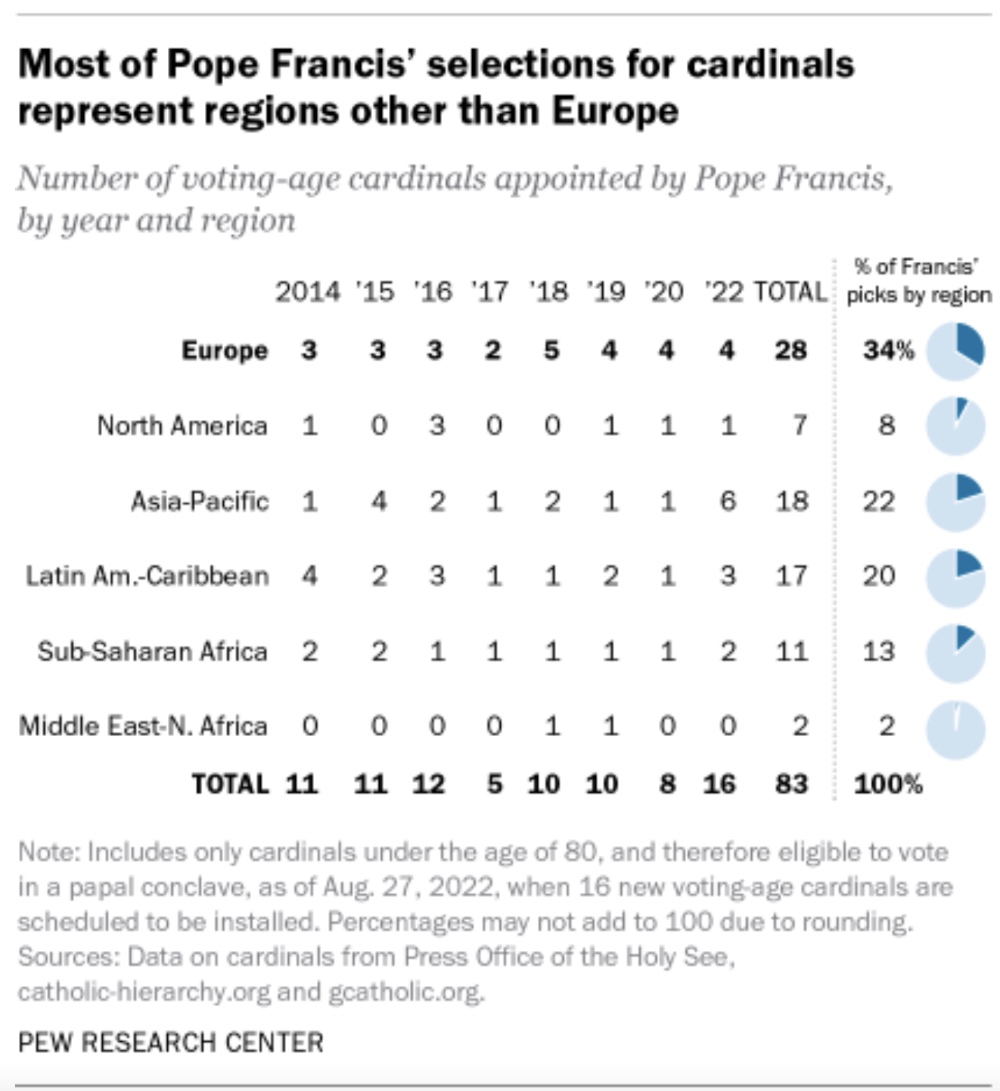
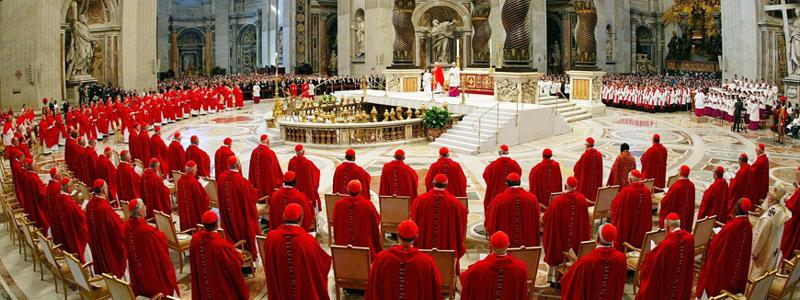 Francis, an Argentinian who is the first pope from outside Europe since the eighth century, still has picked more cardinals from Europe than from any other region. Of the 83 newly appointed or currently eligible voting cardinals Francis has named so far during his papacy, 34% are from Europe, 22% from the Asia-Pacific region, 20% from Latin America and the Caribbean, 13% from sub-Saharan Africa, 8% from North America and 2% from the Middle East-North Africa region. Altogether, these cardinals appointed by Francis will make up a majority (63%) of the 132 voting members of the College of Cardinals after the Aug. 27 installation ceremony.
Francis, an Argentinian who is the first pope from outside Europe since the eighth century, still has picked more cardinals from Europe than from any other region. Of the 83 newly appointed or currently eligible voting cardinals Francis has named so far during his papacy, 34% are from Europe, 22% from the Asia-Pacific region, 20% from Latin America and the Caribbean, 13% from sub-Saharan Africa, 8% from North America and 2% from the Middle East-North Africa region. Altogether, these cardinals appointed by Francis will make up a majority (63%) of the 132 voting members of the College of Cardinals after the Aug. 27 installation ceremony.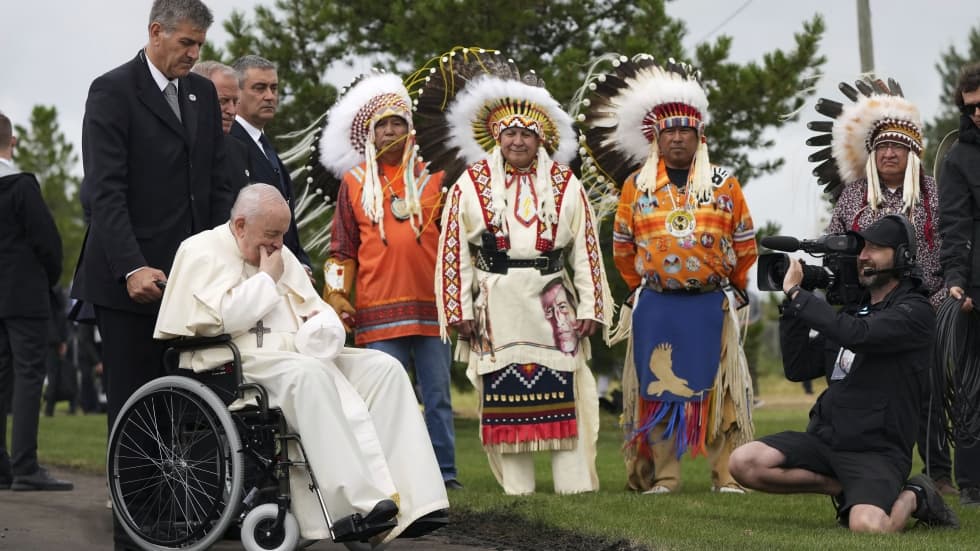 The morning after he arrived in the country, Francis traveled to the lands of four Cree nations to pray at a cemetery. Four chiefs then escorted the pontiff in his wheelchair to powwow ceremonial grounds where he delivered the long-sought apology and was given a feathered headdress.
The morning after he arrived in the country, Francis traveled to the lands of four Cree nations to pray at a cemetery. Four chiefs then escorted the pontiff in his wheelchair to powwow ceremonial grounds where he delivered the long-sought apology and was given a feathered headdress.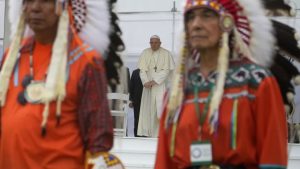 Despite the solemnity of the event, the atmosphere seemed at times joyful: Chiefs processed into the site venue to a hypnotic drumbeat, elders danced and the crowd cheered and chanted war songs, victory songs and finally a healing song.
Despite the solemnity of the event, the atmosphere seemed at times joyful: Chiefs processed into the site venue to a hypnotic drumbeat, elders danced and the crowd cheered and chanted war songs, victory songs and finally a healing song.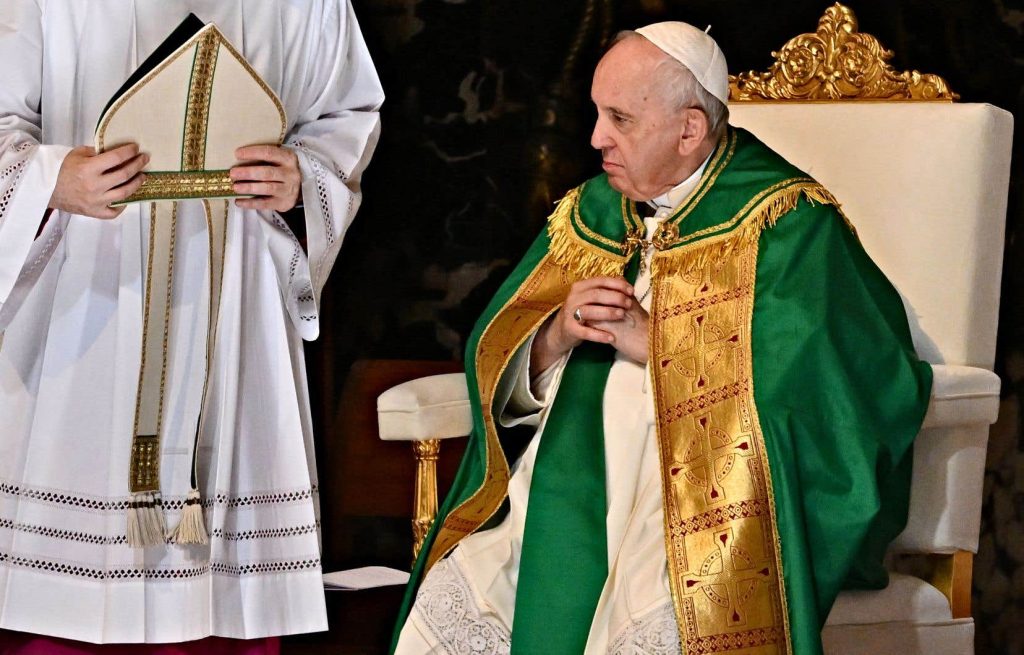 Francis admitted his health struggles have “certainly limited” him in his role recently, namely in leading him to postpone a planned trip to two countries in Africa, but he insisted he has no intention of stepping down at the moment.
Francis admitted his health struggles have “certainly limited” him in his role recently, namely in leading him to postpone a planned trip to two countries in Africa, but he insisted he has no intention of stepping down at the moment.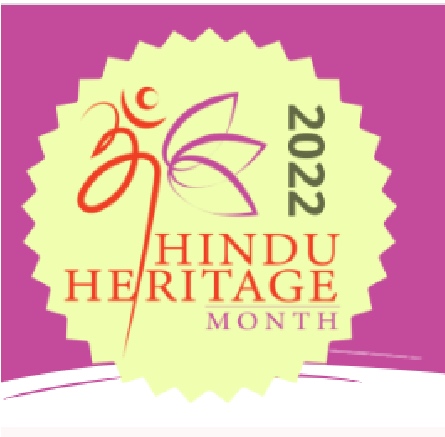 Echoing Bansal’s sentiments, Amitabh Mittal, General Secretary, World Hindu Council of America said, “I encourage our brothers and sisters in Dharma to spread the message of Hindu Heritage Month around the world.”
Echoing Bansal’s sentiments, Amitabh Mittal, General Secretary, World Hindu Council of America said, “I encourage our brothers and sisters in Dharma to spread the message of Hindu Heritage Month around the world.”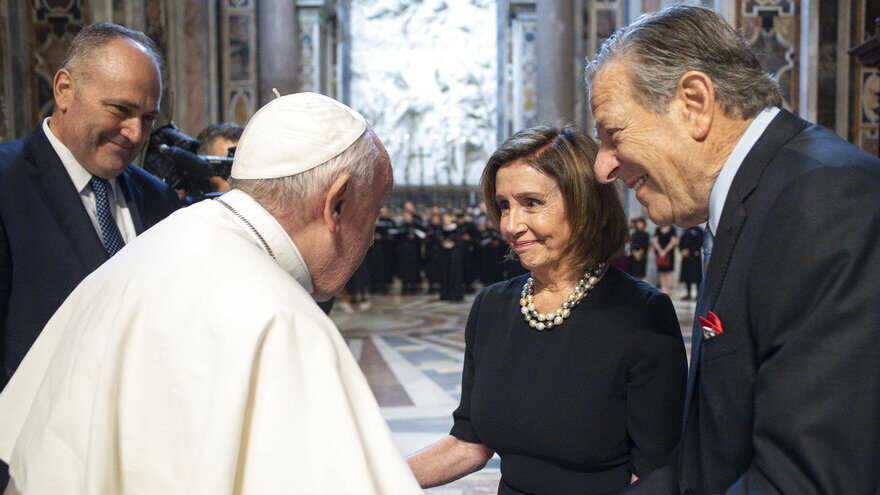
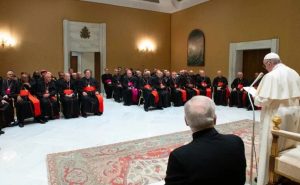 A year ago, Francis reintroduced the restrictions on celebrating the Old Latin Mass, which had been allowed by his predecessor Pope Benedict XVI in 2007. Unlike that document, which was aimed at bishops and priests, “Desiderio Desideravi” is addressed to all the Catholic faithful.
A year ago, Francis reintroduced the restrictions on celebrating the Old Latin Mass, which had been allowed by his predecessor Pope Benedict XVI in 2007. Unlike that document, which was aimed at bishops and priests, “Desiderio Desideravi” is addressed to all the Catholic faithful. 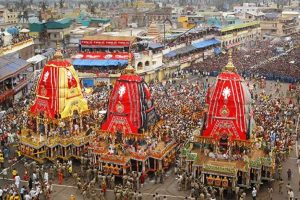
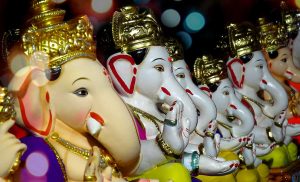
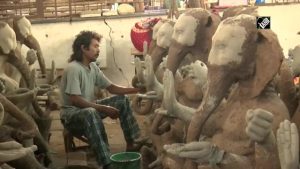 These idols are inexpensive and can be bought by all Kanta said, and added “Apart from Bhopal, I get orders from other places, including Pune and Delhi. People are really keen on buying these idols. Many people want to learn how to make them too.”
These idols are inexpensive and can be bought by all Kanta said, and added “Apart from Bhopal, I get orders from other places, including Pune and Delhi. People are really keen on buying these idols. Many people want to learn how to make them too.”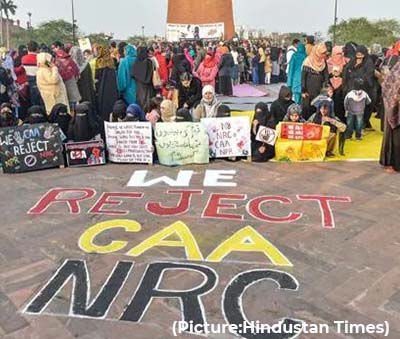 When one of my cousins in Mumbai attended a Catholic school in the 1970s and 1980s, his circle of friends included people of numerous religions — Hindus, Muslims and Parsis, among others. They would go to each other’s homes and to each other’s houses of worship — even to pray, if there was an exam coming up!
When one of my cousins in Mumbai attended a Catholic school in the 1970s and 1980s, his circle of friends included people of numerous religions — Hindus, Muslims and Parsis, among others. They would go to each other’s homes and to each other’s houses of worship — even to pray, if there was an exam coming up!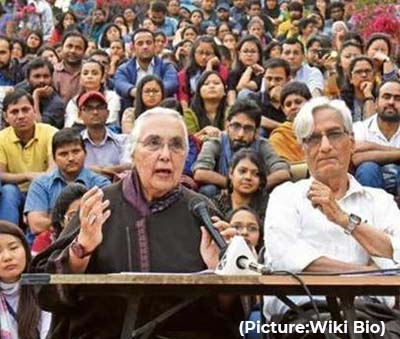 In short, if you’re someone in the Hindu diaspora who has economic or social power and you don’t speak up against state-sanctioned violence and discrimination in India, you might as well be participating in it. If you’re against discrimination here, then you’ve got to be against discrimination there.
In short, if you’re someone in the Hindu diaspora who has economic or social power and you don’t speak up against state-sanctioned violence and discrimination in India, you might as well be participating in it. If you’re against discrimination here, then you’ve got to be against discrimination there.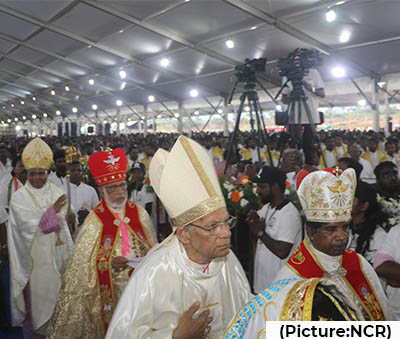 Indicating the esteem with which St. Devasahayam is revered, in attendance were four ministers of the Tamil Nadu state cabinet, led by the speaker of the state legislature, and Hindu leaders.
Indicating the esteem with which St. Devasahayam is revered, in attendance were four ministers of the Tamil Nadu state cabinet, led by the speaker of the state legislature, and Hindu leaders.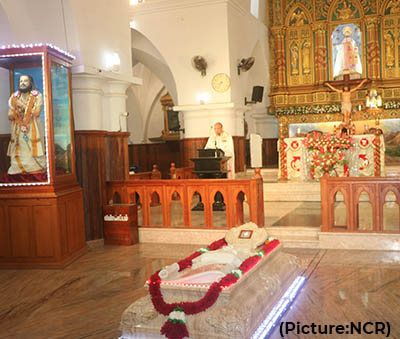 He recalled, “Finally seeing my pitiable condition of being carried around like a baby, my mother relented. It was after weeks of stay and prayer at the care center [at the martyrdom spot] I had a vision of a man in a beard coming and asking me for water. I told him, ‘I cannot walk.’ He said, ‘You can walk’ — and, amazingly, I walked, after months, to bring water for him. But he was gone. Only then I realized it was the saint.”
He recalled, “Finally seeing my pitiable condition of being carried around like a baby, my mother relented. It was after weeks of stay and prayer at the care center [at the martyrdom spot] I had a vision of a man in a beard coming and asking me for water. I told him, ‘I cannot walk.’ He said, ‘You can walk’ — and, amazingly, I walked, after months, to bring water for him. But he was gone. Only then I realized it was the saint.”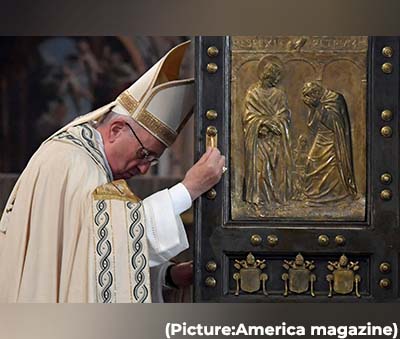 Notable was the timing: The Vatican and the rest of Italy are usually on holiday in August to mid-September, with all but essential business closed. Calling a major consistory in late August to create new cardinals, gathering churchmen for two days of talks on implementing his reform and making a symbolically significant pastoral visit suggests Francis might have out-of-the-ordinary business in mind.
Notable was the timing: The Vatican and the rest of Italy are usually on holiday in August to mid-September, with all but essential business closed. Calling a major consistory in late August to create new cardinals, gathering churchmen for two days of talks on implementing his reform and making a symbolically significant pastoral visit suggests Francis might have out-of-the-ordinary business in mind.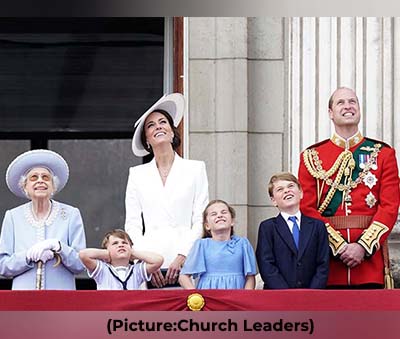 When Elizabeth came to the throne in 1952, Britain was still being rebuilt after the end of World War II and its heavy bombing campaigns; Winston Churchill was prime minister and the country still had an empire. The young queen’s coronation suggested a new era — as the millions of television sets purchased to watch the live broadcast of the ceremony from London’s Westminster Abbey signaled.
When Elizabeth came to the throne in 1952, Britain was still being rebuilt after the end of World War II and its heavy bombing campaigns; Winston Churchill was prime minister and the country still had an empire. The young queen’s coronation suggested a new era — as the millions of television sets purchased to watch the live broadcast of the ceremony from London’s Westminster Abbey signaled.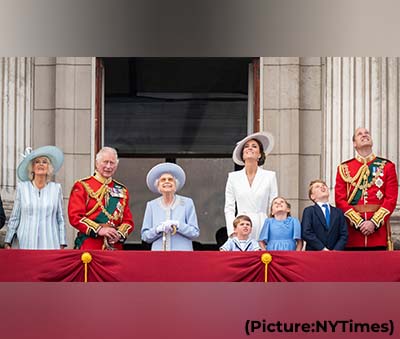 Today, the role of Supreme Governor indicates the British monarch retains a constitutional role regarding the established Church of England but does not govern or manage it. The modern Elizabeth has left that to the bishops, although she addresses general synods and has a role as a listener and guide to her primate, the Archbishop of Canterbury.
Today, the role of Supreme Governor indicates the British monarch retains a constitutional role regarding the established Church of England but does not govern or manage it. The modern Elizabeth has left that to the bishops, although she addresses general synods and has a role as a listener and guide to her primate, the Archbishop of Canterbury.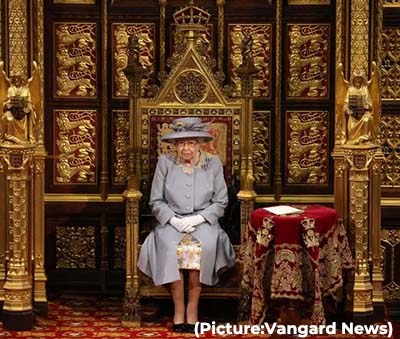 As she planned her coronation with dress fittings, selecting music and getting the crown jewels from their display in the Tower of London, there were also sessions with then-Archbishop of Canterbury Geoffrey Fisher, who provided her with a book of special prayers — a volume she keeps to this day among her most treasured possessions.
As she planned her coronation with dress fittings, selecting music and getting the crown jewels from their display in the Tower of London, there were also sessions with then-Archbishop of Canterbury Geoffrey Fisher, who provided her with a book of special prayers — a volume she keeps to this day among her most treasured possessions.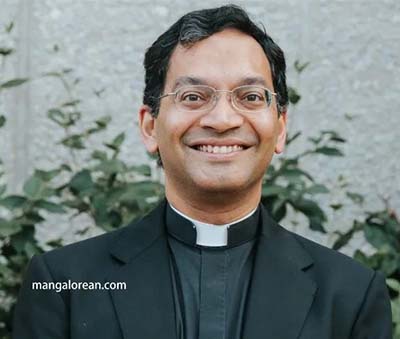 “I promise to work hard for you, to spill my blood for you,” he pledged. “But I bring to your attention that this year, in the Diocese of Columbus, there will be more bishops than priests ordained.
“I promise to work hard for you, to spill my blood for you,” he pledged. “But I bring to your attention that this year, in the Diocese of Columbus, there will be more bishops than priests ordained.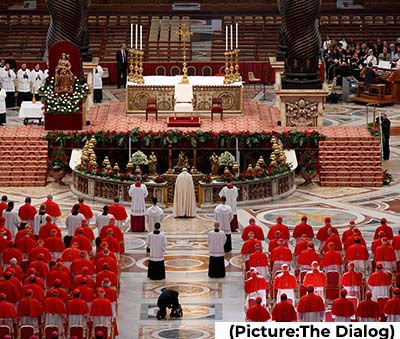 Sixteen of those who will receive the prestigious red cardinal’s hat from Francis in a consistory ceremony at the Vatican on Aug. 27 are younger than 80 and thus would be eligible to vote for his successor if a conclave — in which pontiffs are secretly elected — were to be held.
Sixteen of those who will receive the prestigious red cardinal’s hat from Francis in a consistory ceremony at the Vatican on Aug. 27 are younger than 80 and thus would be eligible to vote for his successor if a conclave — in which pontiffs are secretly elected — were to be held.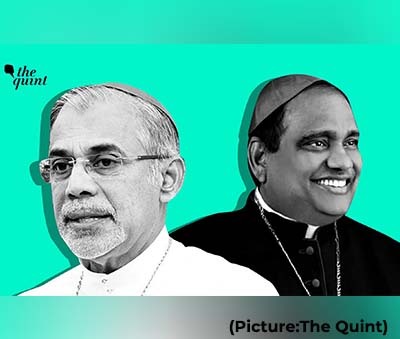 Due to their historical power and influence, they are still called the “Princes of the Church”. It is a reference to those who held the equivalent role of a royal prince and in feudal times ruled a principality. However,
Due to their historical power and influence, they are still called the “Princes of the Church”. It is a reference to those who held the equivalent role of a royal prince and in feudal times ruled a principality. However, 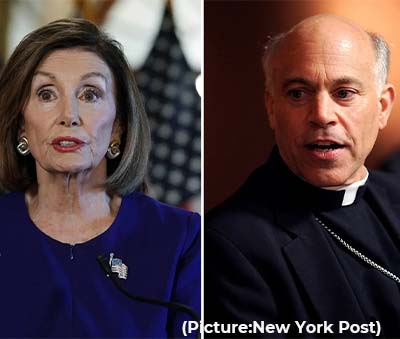 In his letter and in a separate
In his letter and in a separate 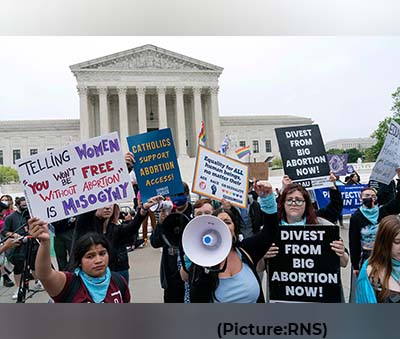 But Alito also overlooks the actual issue at stake. If Roe were overturned, it would abrogate the religious freedom and individual rights of several minority religious communities, including U.S. Jews, Muslims and Hindus. These communities support abortion rights in some or all cases in numbers equivalent to or much greater than the general public. That support is often rooted in their faith and the ethics of individual choice.
But Alito also overlooks the actual issue at stake. If Roe were overturned, it would abrogate the religious freedom and individual rights of several minority religious communities, including U.S. Jews, Muslims and Hindus. These communities support abortion rights in some or all cases in numbers equivalent to or much greater than the general public. That support is often rooted in their faith and the ethics of individual choice.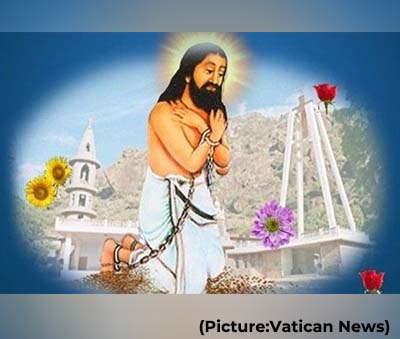 “Saint Devasahayam stood for equality and fought against casteism and communalism. His sainthood comes at a time India is facing a surge in communalism,” said retired Indian civil servant M G Devasahayam, who had written to the Vatican, seeking removal of Devasahayam’s caste name.
“Saint Devasahayam stood for equality and fought against casteism and communalism. His sainthood comes at a time India is facing a surge in communalism,” said retired Indian civil servant M G Devasahayam, who had written to the Vatican, seeking removal of Devasahayam’s caste name.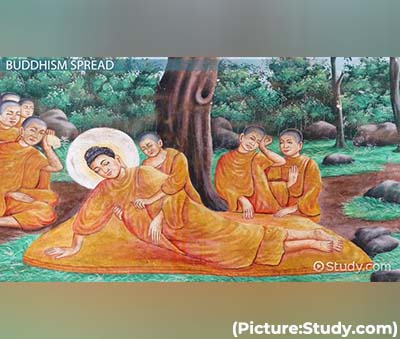 He said that Indian government is working on mission mode with state governments to develop Buddha Circuit.
He said that Indian government is working on mission mode with state governments to develop Buddha Circuit.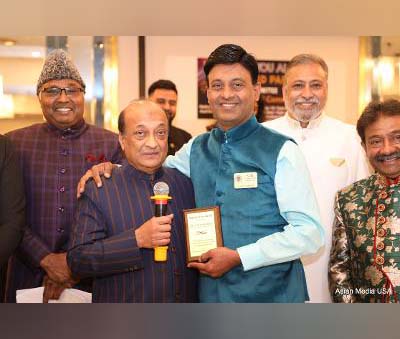 Dr. Tajamul Hussain, said all religions teach love and empathy and we have to build bridges and spread love. He opined that practicing these values is the need of the hour for giving a big boost to mutual co- existence, especially in the present times, which are characterized by increasing distances among people professing different faiths. “My hometown is Hyderabad in India, which is known for “Ganga Jamuni Tahzeeb’, that is, a fusion of elements of different religions”, he added.
Dr. Tajamul Hussain, said all religions teach love and empathy and we have to build bridges and spread love. He opined that practicing these values is the need of the hour for giving a big boost to mutual co- existence, especially in the present times, which are characterized by increasing distances among people professing different faiths. “My hometown is Hyderabad in India, which is known for “Ganga Jamuni Tahzeeb’, that is, a fusion of elements of different religions”, he added. The Chicago Eid Committee presented awards to the community leaders for their excellent service to the community of Chicago and Dr. Suresh Reddy, Dr Rajiv Kandala, Rezwanul Haque, Saima Azfar, Shalini Gupta and Rajendra Singh Mago were awarded. The book release of A.Q. Siddiqui was also done by the Chicago Eid Committee and Mr. Siddiqui signed the copies for the community.
The Chicago Eid Committee presented awards to the community leaders for their excellent service to the community of Chicago and Dr. Suresh Reddy, Dr Rajiv Kandala, Rezwanul Haque, Saima Azfar, Shalini Gupta and Rajendra Singh Mago were awarded. The book release of A.Q. Siddiqui was also done by the Chicago Eid Committee and Mr. Siddiqui signed the copies for the community.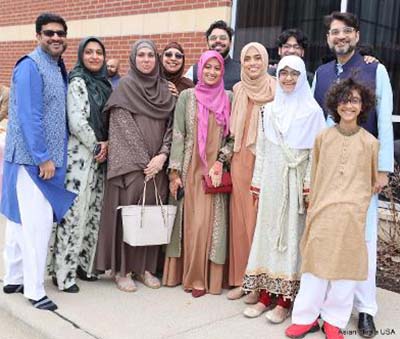 Women in vibrant colored dresses, men in ethnic outfits and children, smiling and laughing, filled the parking lots and poured into all the three locations. Volunteers of the Eid Committee of the ICN open-heartedly welcomed the incoming persons so as to ensure that every one of them was able to partake in the Eid prayers, without any inconvenience. Despite the large numbers, the volunteers of the ICN and board members were able to direct the crowds effortlessly and efficiently.
Women in vibrant colored dresses, men in ethnic outfits and children, smiling and laughing, filled the parking lots and poured into all the three locations. Volunteers of the Eid Committee of the ICN open-heartedly welcomed the incoming persons so as to ensure that every one of them was able to partake in the Eid prayers, without any inconvenience. Despite the large numbers, the volunteers of the ICN and board members were able to direct the crowds effortlessly and efficiently.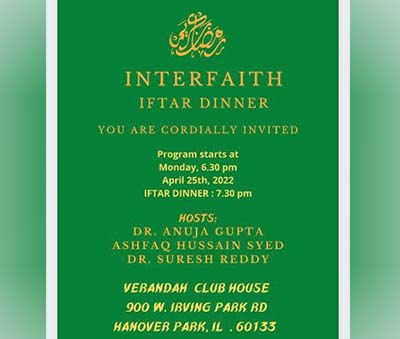 Recognizing the imperative need for dialogue and appreciation among different faiths and religions to enhance mutual understanding, harmony and cooperation among people, an Interfaith Iftar was hosted by Dr. Suresh Reddy, Dr. Anuja Gupta, and Shri Ashfaq Hussain Syed, under the auspices of Verandah Community Outreach on April 25th in Hanover Park, near Chicago, in Illinois. Dr. Suresh Reddy, born and grew up in from Hyderabad, India, a city of many religions, shared his own experiences of Iftar celebrations while growing up in Hyderabad.
Recognizing the imperative need for dialogue and appreciation among different faiths and religions to enhance mutual understanding, harmony and cooperation among people, an Interfaith Iftar was hosted by Dr. Suresh Reddy, Dr. Anuja Gupta, and Shri Ashfaq Hussain Syed, under the auspices of Verandah Community Outreach on April 25th in Hanover Park, near Chicago, in Illinois. Dr. Suresh Reddy, born and grew up in from Hyderabad, India, a city of many religions, shared his own experiences of Iftar celebrations while growing up in Hyderabad.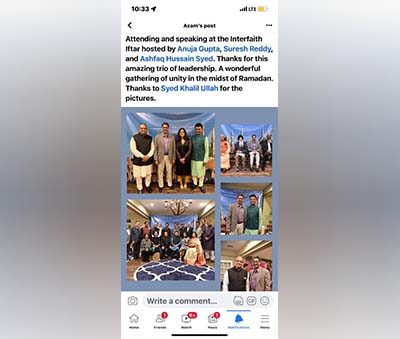 Iftar is the fast-breaking meal observed each evening at sundown during the holy month of Ramadan. The Interfaith Iftar Dinner is an opportunity for the community to join our Muslim friends for an evening meal as they break their Ramadan fast, added Ashfaq Syed. Ramadan is a time of revelation and a time of disruption, he said, in which Muslims draw near to God by breaking away from the distractions of the world.
Iftar is the fast-breaking meal observed each evening at sundown during the holy month of Ramadan. The Interfaith Iftar Dinner is an opportunity for the community to join our Muslim friends for an evening meal as they break their Ramadan fast, added Ashfaq Syed. Ramadan is a time of revelation and a time of disruption, he said, in which Muslims draw near to God by breaking away from the distractions of the world.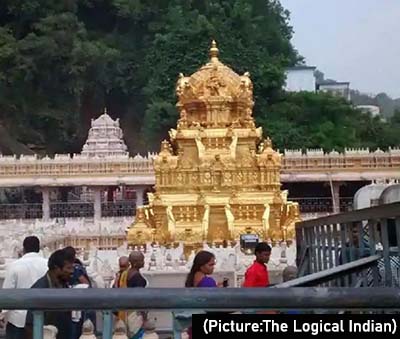 Pratik Khedkar, an avid biker and Koo employee, will ride 4000 kilometres from Madhya Pradesh to Uttarakhand. Pratik will visit key pilgrimage sites in the Himalayan state, including Haridwar, Rishikesh, Uttarkashi, Gangotri, Yamunotri, and Badrinath, as part of Koo’s Operations Team. The journey will come to an end at Gaurikund, the base camp for the Kedarnath trek. This campaign, which has the support of Uttarakhand Tourism, aims to assist temple trusts and spiritual centres across the state in harnessing the social media revolution that is currently transforming the world. The ‘India Spiritual Journey’ will be gradually expanded to pilgrimage sites throughout India.
Pratik Khedkar, an avid biker and Koo employee, will ride 4000 kilometres from Madhya Pradesh to Uttarakhand. Pratik will visit key pilgrimage sites in the Himalayan state, including Haridwar, Rishikesh, Uttarkashi, Gangotri, Yamunotri, and Badrinath, as part of Koo’s Operations Team. The journey will come to an end at Gaurikund, the base camp for the Kedarnath trek. This campaign, which has the support of Uttarakhand Tourism, aims to assist temple trusts and spiritual centres across the state in harnessing the social media revolution that is currently transforming the world. The ‘India Spiritual Journey’ will be gradually expanded to pilgrimage sites throughout India.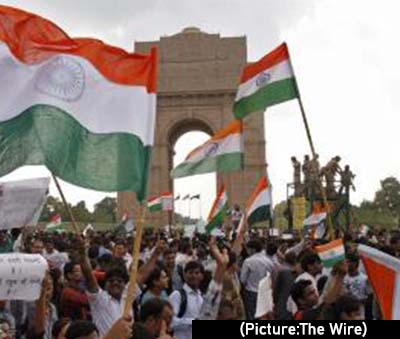 In 2021, the report said in its key findings, “The Indian government escalated its promotion and enforcement of policies — including those promoting a Hindu-nationalist agenda — that negatively affected Muslims, Christians, Sikhs, Dalits, and other religious minorities. The government continued to systemize its ideological vision of a Hindu state at both the national and state levels through the use of both existing and new laws and structural changes hostile to the country’s religious minorities”.
In 2021, the report said in its key findings, “The Indian government escalated its promotion and enforcement of policies — including those promoting a Hindu-nationalist agenda — that negatively affected Muslims, Christians, Sikhs, Dalits, and other religious minorities. The government continued to systemize its ideological vision of a Hindu state at both the national and state levels through the use of both existing and new laws and structural changes hostile to the country’s religious minorities”.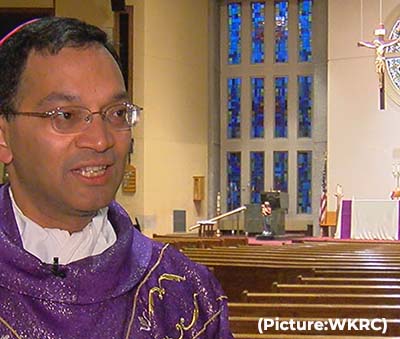 Rev. Fernandes was ordained a priest on May 18, 2002, for the Archdiocese of Cincinnati and two years later he went to Rome to earn a licentiate and doctoral degree in moral theology from the Alphonsian Academy. Fr Earl served as vicar of Holy Angels parish and was a religious teacher at Lehman Catholic High School from 2002 to 2004.
Rev. Fernandes was ordained a priest on May 18, 2002, for the Archdiocese of Cincinnati and two years later he went to Rome to earn a licentiate and doctoral degree in moral theology from the Alphonsian Academy. Fr Earl served as vicar of Holy Angels parish and was a religious teacher at Lehman Catholic High School from 2002 to 2004.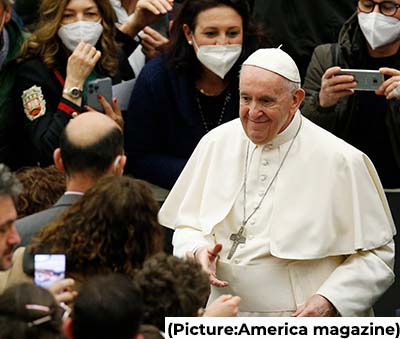 “Let us all commit ourselves to imploring peace, from our balconies and in our streets,″ Francis said. ”May the leaders of nations hear people’s plea for peace.”
“Let us all commit ourselves to imploring peace, from our balconies and in our streets,″ Francis said. ”May the leaders of nations hear people’s plea for peace.”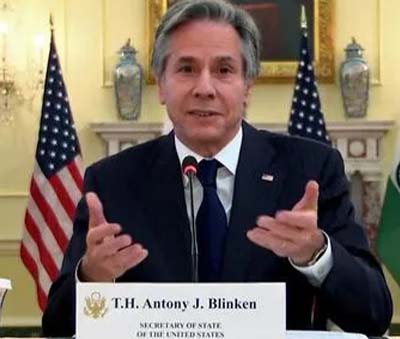 “What does Modi need to do to India’s Muslim population before we will stop considering them a partner in peace?” Omar, who belongs to President Joe Biden’s Democratic Party, said last week.
“What does Modi need to do to India’s Muslim population before we will stop considering them a partner in peace?” Omar, who belongs to President Joe Biden’s Democratic Party, said last week.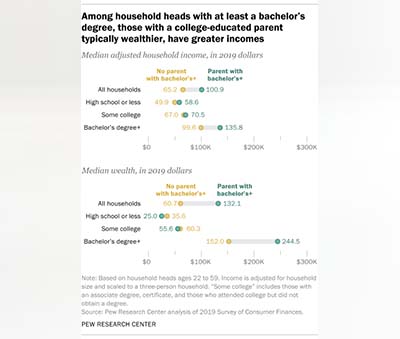 There are racial and ethnic differences in college graduation patterns, as well as in the reasons for not completing a degree. Among adults ages 25 and older, 61% of Asian Americans have a bachelor’s degree or more education, along with 42% of White adults, 28% of Black adults and 21% of Hispanic adults, according to 2021
There are racial and ethnic differences in college graduation patterns, as well as in the reasons for not completing a degree. Among adults ages 25 and older, 61% of Asian Americans have a bachelor’s degree or more education, along with 42% of White adults, 28% of Black adults and 21% of Hispanic adults, according to 2021  Only 62% of students who start a degree or certificate program finish their program within six years, according to the most recent data from the
Only 62% of students who start a degree or certificate program finish their program within six years, according to the most recent data from the 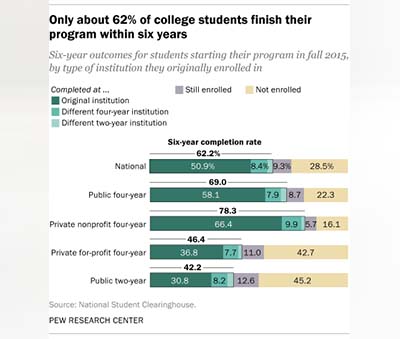 The unemployment rate is lower for college graduates than for workers without a bachelor’s degree, and that gap widened as a result of the coronavirus pandemic. In February 2020, just before the
The unemployment rate is lower for college graduates than for workers without a bachelor’s degree, and that gap widened as a result of the coronavirus pandemic. In February 2020, just before the 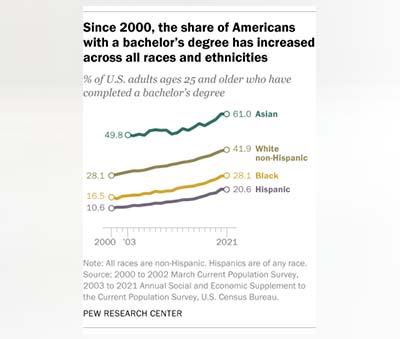 When it comes to income and wealth accumulation, first-generation college graduates lag substantially behind those with college-educated parents, according to a
When it comes to income and wealth accumulation, first-generation college graduates lag substantially behind those with college-educated parents, according to a 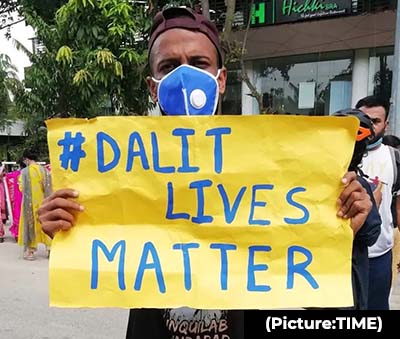 If Hindu unity is a facade, it also follows that the Hindu-Muslim binary, while a common framing for the discussion of Indian politics, cannot be as straightforward as it appears.
If Hindu unity is a facade, it also follows that the Hindu-Muslim binary, while a common framing for the discussion of Indian politics, cannot be as straightforward as it appears.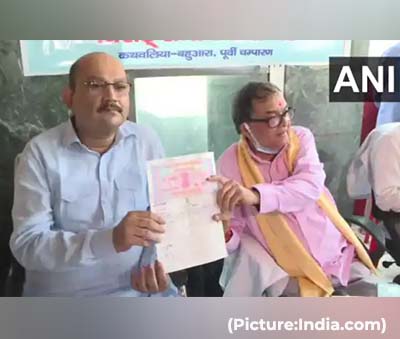 “He recently completed all formalities pertaining to the donation of land belonging to his family for the construction of the temple at the registrar office of the Kesharia sub-division (East Chanmparan),” Kunal, a former police officer, told reporters.
“He recently completed all formalities pertaining to the donation of land belonging to his family for the construction of the temple at the registrar office of the Kesharia sub-division (East Chanmparan),” Kunal, a former police officer, told reporters.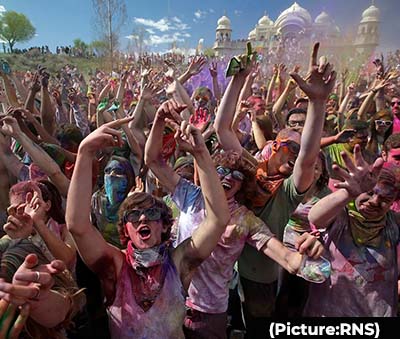 Traditionally celebrated on the last full moon in the lunar month of Phalguna, which falls this year on Friday (March 18), Holi commemorates the triumph of good over evil. In Hindu mythology the demon king Hiranyakashipu commands his subjects to acknowledge him as the supreme God, but his son Prahalada, a devotee of the god Vishnu, refuses. In a rage Hiranyakashipu gives his sister, Holika, a protective cloak and instructs her to take Prahalada in her lap and sit on a burning pyre.
Traditionally celebrated on the last full moon in the lunar month of Phalguna, which falls this year on Friday (March 18), Holi commemorates the triumph of good over evil. In Hindu mythology the demon king Hiranyakashipu commands his subjects to acknowledge him as the supreme God, but his son Prahalada, a devotee of the god Vishnu, refuses. In a rage Hiranyakashipu gives his sister, Holika, a protective cloak and instructs her to take Prahalada in her lap and sit on a burning pyre. Caru Das, director of the Krishna Temple, said that after the first celebrations started at the temple in 1995, festivities soon moved outdoors to accommodate a rock band, and more people started to come as word got around.
Caru Das, director of the Krishna Temple, said that after the first celebrations started at the temple in 1995, festivities soon moved outdoors to accommodate a rock band, and more people started to come as word got around.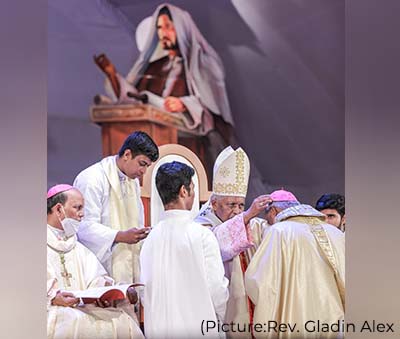 Known among his priest friends and the larger Catholic community in Kerala, the state with the maximum number of Christians in the country, having as many as 20% of the state’s population being Christian, the newly consecrated Archbishop Netto is known for his simplicity, goodness at heart, down to earth approach and cordial relationship with one and all.
Known among his priest friends and the larger Catholic community in Kerala, the state with the maximum number of Christians in the country, having as many as 20% of the state’s population being Christian, the newly consecrated Archbishop Netto is known for his simplicity, goodness at heart, down to earth approach and cordial relationship with one and all.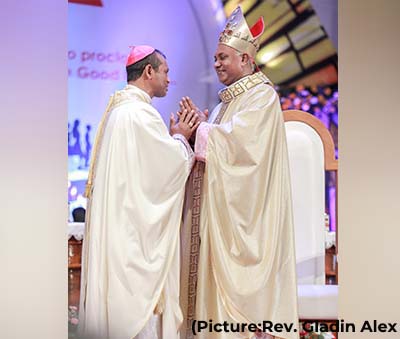 Delivering the benediction, Cardinal Baselios Cleemis Catholicos, Major Archbishop-Catholicos of Malankara Syrian Catholic Church, called upon the new Archbishop to lead the coastal population from the front for their rights and betterment. The benefactors of such efforts must not be the parishioners alone, but the entire community in the region. He also recounted the selfless deeds of the fisher-folks in rescuing those stranded in the floods of 2018.
Delivering the benediction, Cardinal Baselios Cleemis Catholicos, Major Archbishop-Catholicos of Malankara Syrian Catholic Church, called upon the new Archbishop to lead the coastal population from the front for their rights and betterment. The benefactors of such efforts must not be the parishioners alone, but the entire community in the region. He also recounted the selfless deeds of the fisher-folks in rescuing those stranded in the floods of 2018. During his long pastoral ministry, serving the Church, Archbishop Netto has held the following offices: He was the parish vicar in Peringamala (1990-1991) and of the Cathedral of Palayam (1991-1995) and executive secretary for ecumenism and interreligious dialogue (1994-1995). He then served as parish priest in Pettah (1999-2003), and executive secretary for the Basic Christian Communities (2000-2004) and rector of Saint Vincent’s Minor Seminary in Trivandrum (2003-2010).
During his long pastoral ministry, serving the Church, Archbishop Netto has held the following offices: He was the parish vicar in Peringamala (1990-1991) and of the Cathedral of Palayam (1991-1995) and executive secretary for ecumenism and interreligious dialogue (1994-1995). He then served as parish priest in Pettah (1999-2003), and executive secretary for the Basic Christian Communities (2000-2004) and rector of Saint Vincent’s Minor Seminary in Trivandrum (2003-2010). The diocese of Trivandrum was established by His Holiness Pope Pius XI on July 1, 1937 through the Bull “In Ora Malabarica” with the four taluks of Neyyantinkara, Nedumangad, Trivandrum and Chirayinkeezh bifurcated from the diocese of Quilon.
The diocese of Trivandrum was established by His Holiness Pope Pius XI on July 1, 1937 through the Bull “In Ora Malabarica” with the four taluks of Neyyantinkara, Nedumangad, Trivandrum and Chirayinkeezh bifurcated from the diocese of Quilon.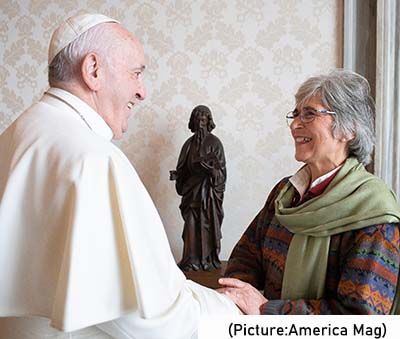 Advocating for a peace process that is more diverse, Susana Raffalli, a nutrition adviser at Caritas Venezuela, who appeared via Zoom, was one of several speakers who praised women’s emphasis on dialogue. Women tend to be more concerned with “actually bringing commitments and agreements toward peace,” Raffalli said. In Venezuela, she said, women are more conscious of vulnerable populations’ stake in the peace process.
Advocating for a peace process that is more diverse, Susana Raffalli, a nutrition adviser at Caritas Venezuela, who appeared via Zoom, was one of several speakers who praised women’s emphasis on dialogue. Women tend to be more concerned with “actually bringing commitments and agreements toward peace,” Raffalli said. In Venezuela, she said, women are more conscious of vulnerable populations’ stake in the peace process. Speaking about “the fundamental theology of the priesthood” at the conference, which was organized by the Vatican’s Congregation for Bishops and the Center for the Research and Anthropology of Vocations, Pope Francis identified “mercenary” attitudes that emerge during crisis.
Speaking about “the fundamental theology of the priesthood” at the conference, which was organized by the Vatican’s Congregation for Bishops and the Center for the Research and Anthropology of Vocations, Pope Francis identified “mercenary” attitudes that emerge during crisis.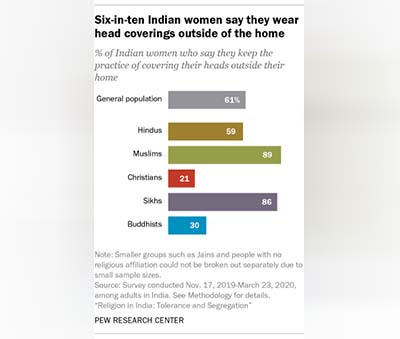 Head coverings are relatively common among Indian women. About six-in-ten women in India (61%) say they keep the practice of covering their heads outside of their homes, according to a
Head coverings are relatively common among Indian women. About six-in-ten women in India (61%) say they keep the practice of covering their heads outside of their homes, according to a 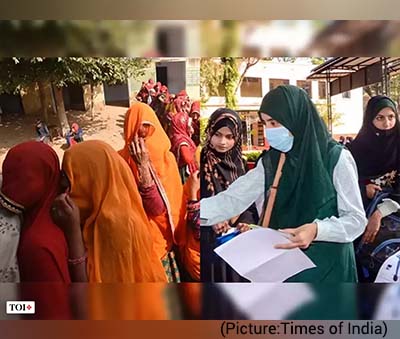 These regional differences are largely driven by Hindu women, as Muslim women tend to keep the practice of covering their heads in public regardless of what region they live in. This leads to large differences between Muslims and Hindus in the South in particular.
These regional differences are largely driven by Hindu women, as Muslim women tend to keep the practice of covering their heads in public regardless of what region they live in. This leads to large differences between Muslims and Hindus in the South in particular. Nationally, head coverings tend to be more common among women who are older, married, more religious and who have less formal educational attainment. The practice is also more prevalent in rural areas.
Nationally, head coverings tend to be more common among women who are older, married, more religious and who have less formal educational attainment. The practice is also more prevalent in rural areas.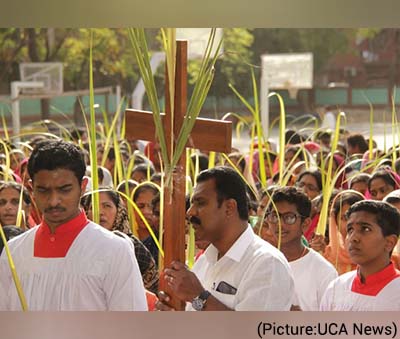 This was perhaps the third most violent Christmas the community has faced in India. On Christmas eve of 1998, 36 rural log churches were burnt and destroyed in the Dangs forested district of the state of Gujarat. The incidents were dubbed a “laboratory for right wing religious and nationalist fanatics.” On Christmas eve of 2007, another forest district, this time Kandhamal in the state of Orissa [now called Odisha] became the laboratory. Villages, houses, small prayer halls, large churches, and institutions were burnt, and people forced to flee for their lives into the forest. The violence was repeated a few months later. More than 100 were killed, many women, including a Catholic Nun raped, and close to 400 Churches and institutions destroyed. The Orissa government had identified the attackers as belonging to an arm of the Rashtriya Swayamsewak Sangh which had launched a massive hate campaign targeting the Christian community.
This was perhaps the third most violent Christmas the community has faced in India. On Christmas eve of 1998, 36 rural log churches were burnt and destroyed in the Dangs forested district of the state of Gujarat. The incidents were dubbed a “laboratory for right wing religious and nationalist fanatics.” On Christmas eve of 2007, another forest district, this time Kandhamal in the state of Orissa [now called Odisha] became the laboratory. Villages, houses, small prayer halls, large churches, and institutions were burnt, and people forced to flee for their lives into the forest. The violence was repeated a few months later. More than 100 were killed, many women, including a Catholic Nun raped, and close to 400 Churches and institutions destroyed. The Orissa government had identified the attackers as belonging to an arm of the Rashtriya Swayamsewak Sangh which had launched a massive hate campaign targeting the Christian community. “This is a great moment for India to see the Sacred Ensembles of the Hoysalas temples being submitted for inscription in the World Heritage List.”
“This is a great moment for India to see the Sacred Ensembles of the Hoysalas temples being submitted for inscription in the World Heritage List.”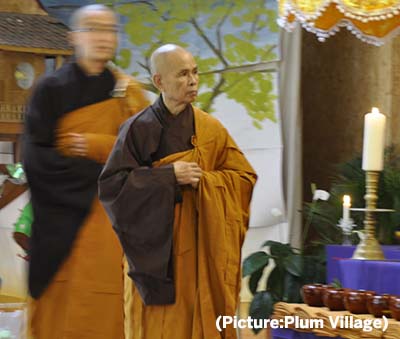 Top aides countered the rumors but admitted he was notably weaker. In 2018, Thích Nhất Hạnh returned to Tu Hiếu Temple where, at age 16, he had become a novice monk. He called it his “final homecoming.”
Top aides countered the rumors but admitted he was notably weaker. In 2018, Thích Nhất Hạnh returned to Tu Hiếu Temple where, at age 16, he had become a novice monk. He called it his “final homecoming.” The Court order last week said that “This court is unable to place reliance on the solitary testimony of PW1 and to hold the accused guilty of the offences charged against him”. Mulakkal was present in the courtroom when the verdict was pronounced. He later broke down in the corridor outside, hugged his lawyers, and told reporters before leaving the premises: “Daivathinu sthuthi’ (Praise the Lord).”
The Court order last week said that “This court is unable to place reliance on the solitary testimony of PW1 and to hold the accused guilty of the offences charged against him”. Mulakkal was present in the courtroom when the verdict was pronounced. He later broke down in the corridor outside, hugged his lawyers, and told reporters before leaving the premises: “Daivathinu sthuthi’ (Praise the Lord).” Pope Francis proposes three paths for building lasting peace. First, Dialogue between Generations, second, Education and third Work. A word on each:
Pope Francis proposes three paths for building lasting peace. First, Dialogue between Generations, second, Education and third Work. A word on each: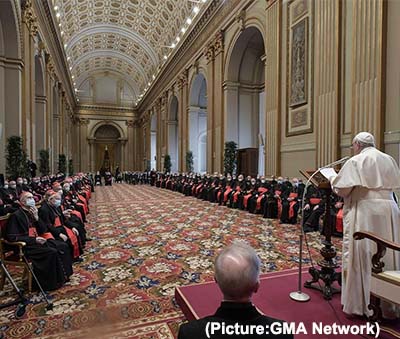 Pope Francis’ reform efforts at the Vatican and in the Catholic Church have been met with both enthusiasm and criticism. In March,
Pope Francis’ reform efforts at the Vatican and in the Catholic Church have been met with both enthusiasm and criticism. In March, 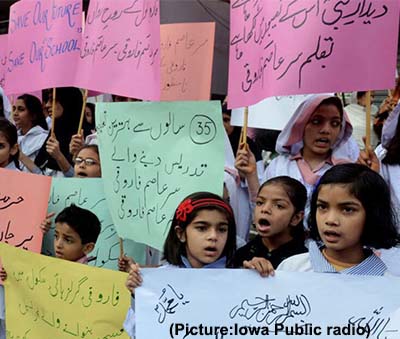 Evolution of Pakistan’s Blasphemy Laws Offences relating to religion in Pakistan were introduced in the colonial era in British India – which included the territory that is now Pakistan – to prevent and curb religious violence between Hindus and Muslims. Under the military government of General Zia-ul-Haq (1977-1988), who set the process of Islamization in Pakistan, additional laws were introduced against blasphemy that were specific to Islam.
Evolution of Pakistan’s Blasphemy Laws Offences relating to religion in Pakistan were introduced in the colonial era in British India – which included the territory that is now Pakistan – to prevent and curb religious violence between Hindus and Muslims. Under the military government of General Zia-ul-Haq (1977-1988), who set the process of Islamization in Pakistan, additional laws were introduced against blasphemy that were specific to Islam.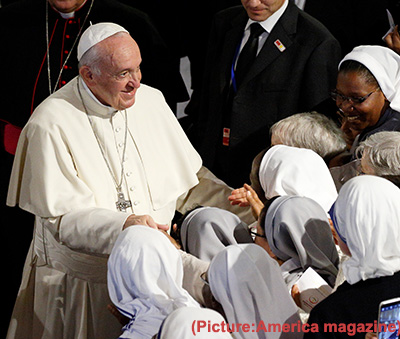 “Our role is to invite more and more women in, into the process, into the conversation and reflection,” said Sr. Patricia Murray, executive secretary of the International Union of Superiors General and a member of the spirituality commission of the Synod. “Particularly those who feel very much neglected, or that the church has forgotten about them or feel estranged from the church.”
“Our role is to invite more and more women in, into the process, into the conversation and reflection,” said Sr. Patricia Murray, executive secretary of the International Union of Superiors General and a member of the spirituality commission of the Synod. “Particularly those who feel very much neglected, or that the church has forgotten about them or feel estranged from the church.” According to India Tourism Statistics 2019, a government of India publication, in 2017, Goa had 68,95,234 domestic and 8,42,220 foreign tourists while in 2018, the respective number of 70,81,559 and 9,33,841 showing a growth rate of 2.70 per cent and 10.88 per cent, respectively. Of course, the pandemic changed the situation, and the tourism sector was the hardest hit. In 2021, even when the domestic sector has picked up slowly, foreign tourists’ numbers are no match.
According to India Tourism Statistics 2019, a government of India publication, in 2017, Goa had 68,95,234 domestic and 8,42,220 foreign tourists while in 2018, the respective number of 70,81,559 and 9,33,841 showing a growth rate of 2.70 per cent and 10.88 per cent, respectively. Of course, the pandemic changed the situation, and the tourism sector was the hardest hit. In 2021, even when the domestic sector has picked up slowly, foreign tourists’ numbers are no match. ‘Kashi and Ganga belong to all. The invaders attacked this city, tried to destroy it. The history of Aurangzeb’s atrocities, his terror tried to change civilization by the sword.
‘Kashi and Ganga belong to all. The invaders attacked this city, tried to destroy it. The history of Aurangzeb’s atrocities, his terror tried to change civilization by the sword.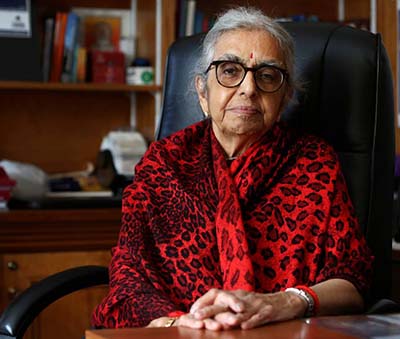 Her grandmother isn’t a pandit — in India, as well as in Indian diaspora communities, that’s been a domain that is largely populated by men, with cultural mores at play. But she had a wealth of religious knowledge, of ritual, of proper pronunciation, to share with her granddaughter.
Her grandmother isn’t a pandit — in India, as well as in Indian diaspora communities, that’s been a domain that is largely populated by men, with cultural mores at play. But she had a wealth of religious knowledge, of ritual, of proper pronunciation, to share with her granddaughter. The documentary, which will air in the early evening, is one piece of a campaign launched by NSC to bring more awareness to the Sikh faith, the world’s fifth-largest religion, and to garner acknowledgement of key dates in the life of the faith’s founder. The film is set to be broadcast in 15 of America’s largest metropolitan areas including Houston, San Francisco and Washington, D.C.
The documentary, which will air in the early evening, is one piece of a campaign launched by NSC to bring more awareness to the Sikh faith, the world’s fifth-largest religion, and to garner acknowledgement of key dates in the life of the faith’s founder. The film is set to be broadcast in 15 of America’s largest metropolitan areas including Houston, San Francisco and Washington, D.C.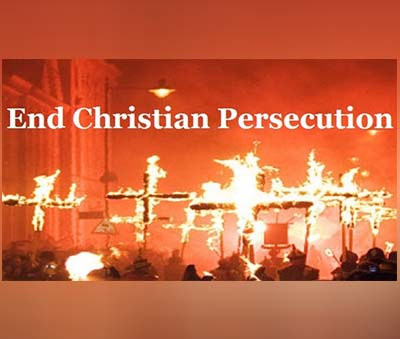 “A week from now, on December 9 and 10, the Biden Administration will be hosting the
“A week from now, on December 9 and 10, the Biden Administration will be hosting the 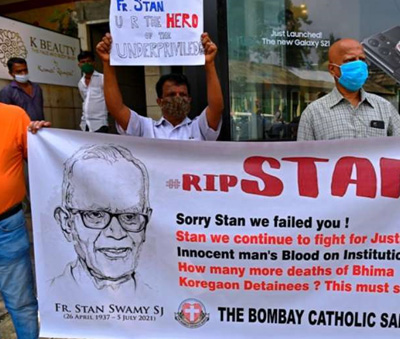 The 84-year-old Jesuit was arrested on Oct. 8, 2020, by the National Investigation Agency (NIA), a federal anti-terror combat unit, from his residence on the outskirts of Jharkhand’s state capital Ranchi in eastern India.
The 84-year-old Jesuit was arrested on Oct. 8, 2020, by the National Investigation Agency (NIA), a federal anti-terror combat unit, from his residence on the outskirts of Jharkhand’s state capital Ranchi in eastern India.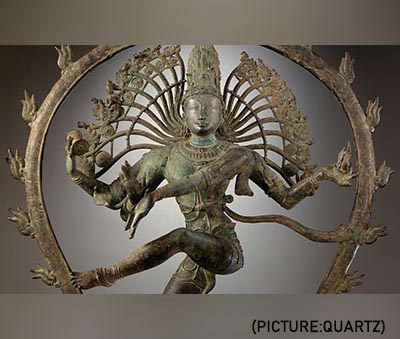 For 16 years he has been working to repatriate gods and goddesses looted from India over the years, and the challenges remain huge, he tells us in today’s episode. For example, in 2020, police seized 19,000 stolen artefacts in an international art trafficking crackdown. 101 suspects were arrested with treasures from around the world, including Colombian and Roman antiquities. One activist estimates that in France alone there are 116,000 African objects that should be returned.
For 16 years he has been working to repatriate gods and goddesses looted from India over the years, and the challenges remain huge, he tells us in today’s episode. For example, in 2020, police seized 19,000 stolen artefacts in an international art trafficking crackdown. 101 suspects were arrested with treasures from around the world, including Colombian and Roman antiquities. One activist estimates that in France alone there are 116,000 African objects that should be returned.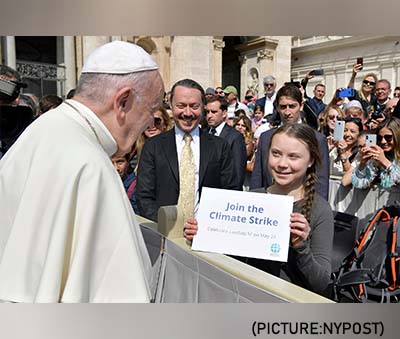 Francis expressed thanks “for all those times when you cultivate the dream of fraternity, work to heal the wounds of God’s creation, fight to ensure respect for the dignity of the vulnerable and spread the spirit of solidarity and sharing.”
Francis expressed thanks “for all those times when you cultivate the dream of fraternity, work to heal the wounds of God’s creation, fight to ensure respect for the dignity of the vulnerable and spread the spirit of solidarity and sharing.”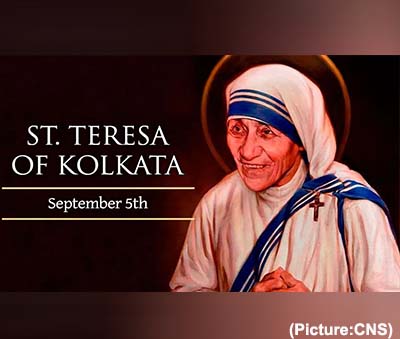 Committee policy, established in 1992, requires four conditions for the inscription of saints and blesseds on the U.S. calendar: They should have been inscribed on diocesan proper calendars for at least five years; the “cultus” of the candidate “should exist in a significant number of dioceses, broader than the area or region of the country”; the candidate should have served in the United States; and a new inscription would ordinarily have the rank of an optional memorial.
Committee policy, established in 1992, requires four conditions for the inscription of saints and blesseds on the U.S. calendar: They should have been inscribed on diocesan proper calendars for at least five years; the “cultus” of the candidate “should exist in a significant number of dioceses, broader than the area or region of the country”; the candidate should have served in the United States; and a new inscription would ordinarily have the rank of an optional memorial.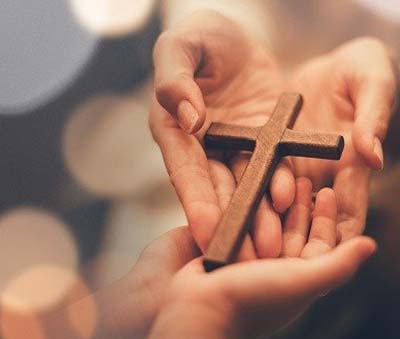 Known as Saju among friends and family, Rev Muthalaly is currently the Vicar of St Mark’s, Gillingham in the diocese of Rochester in England. Ordained in the Church of England in 2008, he has served at St. Marks for six years after curacies in the dioceses of Blackburn and Carlisle.
Known as Saju among friends and family, Rev Muthalaly is currently the Vicar of St Mark’s, Gillingham in the diocese of Rochester in England. Ordained in the Church of England in 2008, he has served at St. Marks for six years after curacies in the dioceses of Blackburn and Carlisle.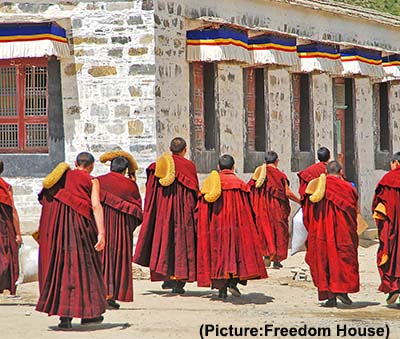 She also said that the Chinese want everything to be melted into the communist style. “So be it Buddhism or anything they want everything to be changed into them.” Speaking over the so-called freedom in Tibet, the Deputy Speaker said: “If there is any freedom in Tibet, why don’t the Chinese let world media go there and see for themselves. “When they shy away from world media that shows that they are hiding something. Why do they have to give all the time white paper on Tibet? This shows that all is not well there,” she said.
She also said that the Chinese want everything to be melted into the communist style. “So be it Buddhism or anything they want everything to be changed into them.” Speaking over the so-called freedom in Tibet, the Deputy Speaker said: “If there is any freedom in Tibet, why don’t the Chinese let world media go there and see for themselves. “When they shy away from world media that shows that they are hiding something. Why do they have to give all the time white paper on Tibet? This shows that all is not well there,” she said.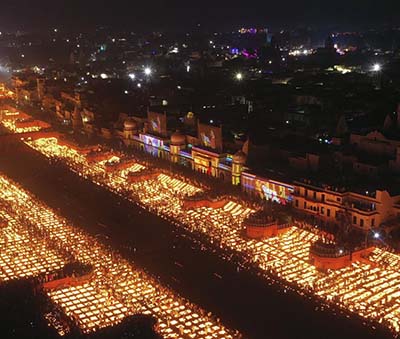 Indians across the country began celebrating Diwali, the Hindu festival of lights, the triumphant return of Lord ram to Ayodhya after rescuing Sita from Sri Lanka. Diwali is typically celebrated by socializing and exchanging gifts with family and friends. Many light oil lamps or candles to symbolize a victory of light over darkness, and fireworks are set off as part of the celebrations.
Indians across the country began celebrating Diwali, the Hindu festival of lights, the triumphant return of Lord ram to Ayodhya after rescuing Sita from Sri Lanka. Diwali is typically celebrated by socializing and exchanging gifts with family and friends. Many light oil lamps or candles to symbolize a victory of light over darkness, and fireworks are set off as part of the celebrations.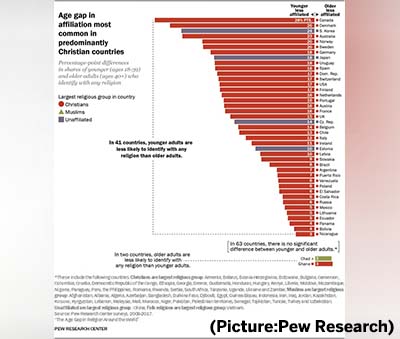 Those questions and many more like them are completely valid and worthwhile to ask. But until about 10 years ago, my answer was something like, “It is statistically difficult, if not impossible, to answer with any degree of accuracy.” (This is how quantitative scholars talk.) Until the mid-2000s, the data that most researchers had available was limited in ways that made many potential areas of inquiry problematic.
Those questions and many more like them are completely valid and worthwhile to ask. But until about 10 years ago, my answer was something like, “It is statistically difficult, if not impossible, to answer with any degree of accuracy.” (This is how quantitative scholars talk.) Until the mid-2000s, the data that most researchers had available was limited in ways that made many potential areas of inquiry problematic. “But one of the things that concern me most about the last few years is another type of pandemic, the invisible pandemic that we are in the midst of. That’s a pandemic of polarization where it feels increasingly people have turned against each other, where they have demonized one another, called each other evil and treated each other as so. That’s a particular kind of darkness,” he said.
“But one of the things that concern me most about the last few years is another type of pandemic, the invisible pandemic that we are in the midst of. That’s a pandemic of polarization where it feels increasingly people have turned against each other, where they have demonized one another, called each other evil and treated each other as so. That’s a particular kind of darkness,” he said. The virtual conference showcased the diversity of views within the Hindu world, feature friends of the Hindu community, and address a troubling trend of anti-Hindu sentiment (Hindudvesha or Hinduphobia) which has more recently plagued the Hindu diaspora in the United States, Canada and other parts of the world.
The virtual conference showcased the diversity of views within the Hindu world, feature friends of the Hindu community, and address a troubling trend of anti-Hindu sentiment (Hindudvesha or Hinduphobia) which has more recently plagued the Hindu diaspora in the United States, Canada and other parts of the world. The two leaders discussed with Pope Francis issues covering a range of areas of interest, including COVID-19, general global perspectives and maintaining peace and tranquility. After the meeting, Modi tweeted, with pictures of him embracing the Pope, “Had a very warm meeting with Pope Francis. I had the opportunity to discuss a wide range of issues with him and also invited him to visit India.”
The two leaders discussed with Pope Francis issues covering a range of areas of interest, including COVID-19, general global perspectives and maintaining peace and tranquility. After the meeting, Modi tweeted, with pictures of him embracing the Pope, “Had a very warm meeting with Pope Francis. I had the opportunity to discuss a wide range of issues with him and also invited him to visit India.” Pope Francis and the Prime Minister then exchanged gifts. Modi gave the Pope a silver candlestick and a copy of The Climate Climb. Pope Francis gave Modi a bronze plaque with the inscription “the desert will become a garden,” and copies of the pope’s writings, including his encyclicals “Laudato Si’” and “Fratelli Tutti,” as well as the “
Pope Francis and the Prime Minister then exchanged gifts. Modi gave the Pope a silver candlestick and a copy of The Climate Climb. Pope Francis gave Modi a bronze plaque with the inscription “the desert will become a garden,” and copies of the pope’s writings, including his encyclicals “Laudato Si’” and “Fratelli Tutti,” as well as the “ “The meeting should not be seen merely as the one between two country heads, rather it was the head of the largest democracy and an ancient culture of the world meeting the head of the largest religious community in the world. This brings in hope for enhancing human fraternity and caring for the poor, because that’s what Christianity stands for. It would bring in positive efforts in India for a mutual trust and collaboration between people of different religious groups. It would also contribute to the very need for dialogues. We are very delighted that the Prime Minister has opened ways for a Papal visit to India,” the Cardinal Cleemis told the media.
“The meeting should not be seen merely as the one between two country heads, rather it was the head of the largest democracy and an ancient culture of the world meeting the head of the largest religious community in the world. This brings in hope for enhancing human fraternity and caring for the poor, because that’s what Christianity stands for. It would bring in positive efforts in India for a mutual trust and collaboration between people of different religious groups. It would also contribute to the very need for dialogues. We are very delighted that the Prime Minister has opened ways for a Papal visit to India,” the Cardinal Cleemis told the media. It took place amid tight security on what was her 70th birthday and was attended by only around 50 guests — mostly family members — due to the Covid-19 pandemic.
It took place amid tight security on what was her 70th birthday and was attended by only around 50 guests — mostly family members — due to the Covid-19 pandemic. “Our mission is to ensure clean power supply round the clock at Sri Darbar Sahib, saving 33 per cent of its annual electricity bill,” United Sikh Mission President Rashpal Singh Dhindsa told the media here.
“Our mission is to ensure clean power supply round the clock at Sri Darbar Sahib, saving 33 per cent of its annual electricity bill,” United Sikh Mission President Rashpal Singh Dhindsa told the media here. Biden is the 14th U.S. president to meet a pontiff at the Vatican, and the Eternal City is bubbling with speculation over what the two are likely to discuss. The meeting is expected to be cordial, focusing on what the two have in common, but historically the relationship between the Vatican and the Oval Office has often been tense — even occasionally hostile.
Biden is the 14th U.S. president to meet a pontiff at the Vatican, and the Eternal City is bubbling with speculation over what the two are likely to discuss. The meeting is expected to be cordial, focusing on what the two have in common, but historically the relationship between the Vatican and the Oval Office has often been tense — even occasionally hostile. The first encounter between a U.S. president and a pope was also a meeting of two global visions for peace, at times opposing and sometimes aligned. The evolving contours of these visions would go on to define the relationship for a century.
The first encounter between a U.S. president and a pope was also a meeting of two global visions for peace, at times opposing and sometimes aligned. The evolving contours of these visions would go on to define the relationship for a century. Cardinal Pietro Parolin, the Vatican’s secretary of state, read the pontiff’s message by video to a special two-day gathering in Milan of the Women’s Forum for the Economy & Society, founded by Publicis public relations to highlight women’s voices in government and diplomacy. The forum is taking place days before the summit in Rome of the heads of state of the world’s largest economies. Before the event,
Cardinal Pietro Parolin, the Vatican’s secretary of state, read the pontiff’s message by video to a special two-day gathering in Milan of the Women’s Forum for the Economy & Society, founded by Publicis public relations to highlight women’s voices in government and diplomacy. The forum is taking place days before the summit in Rome of the heads of state of the world’s largest economies. Before the event,  The number of Catholics in the world grew by more than 15 million from 2018 to 2019, according to a census by the Vatican news agency Fides published on Thursday (Oct. 21). “The increase applies to all continents, except Europe,” which saw the number of Catholic faithful decrease by almost 300,000, the survey found.
The number of Catholics in the world grew by more than 15 million from 2018 to 2019, according to a census by the Vatican news agency Fides published on Thursday (Oct. 21). “The increase applies to all continents, except Europe,” which saw the number of Catholic faithful decrease by almost 300,000, the survey found. The study, “
The study, “ The fragility of the democratic process, that is still non-existent in Pakistan, is on full display with this latest failure to protect the most vulnerable members of Pakistan’s society, especially Christians, Hindus and other minorities in Sindh and Punjab.
The fragility of the democratic process, that is still non-existent in Pakistan, is on full display with this latest failure to protect the most vulnerable members of Pakistan’s society, especially Christians, Hindus and other minorities in Sindh and Punjab. The first female governor of the great state of New York thanbked the organiZers and leaders of the Indian American community: “I want to just thank Uma SenGupta for all you’ve done for us, and to your family, your mother, and the influence of your late father – you are the reason why we celebrate today, people like you who came to this country humbly, not sure of what the future would bring, but you always had that deep rooted faith in your traditions and to know that Diwali followed you to this country, that you had this light within your heart that you could bring to America and let shine and let all of us gather here in honor of the Goddess Lakshmi. Many of the traditions honor the male gods but this is one that’s dedicated to women so I think this is particularly special as well. Dr. Sumita Sengupta, I want to thank you as well. Randhir Jaiswal, the Consul General, is here as well. Dr. Hari Shukla, I want to thank him for making me feel so welcome, the founder of South Asians of New York.”
The first female governor of the great state of New York thanbked the organiZers and leaders of the Indian American community: “I want to just thank Uma SenGupta for all you’ve done for us, and to your family, your mother, and the influence of your late father – you are the reason why we celebrate today, people like you who came to this country humbly, not sure of what the future would bring, but you always had that deep rooted faith in your traditions and to know that Diwali followed you to this country, that you had this light within your heart that you could bring to America and let shine and let all of us gather here in honor of the Goddess Lakshmi. Many of the traditions honor the male gods but this is one that’s dedicated to women so I think this is particularly special as well. Dr. Sumita Sengupta, I want to thank you as well. Randhir Jaiswal, the Consul General, is here as well. Dr. Hari Shukla, I want to thank him for making me feel so welcome, the founder of South Asians of New York.” It has been reported that President Biden will meet with Francis on October 29th. While serving as the U.S. Vice President, Biden had met with Pope Francis for the first time in September 2015, when the pope visited the United States to attend the World Meeting of Families in Philadelphia.
It has been reported that President Biden will meet with Francis on October 29th. While serving as the U.S. Vice President, Biden had met with Pope Francis for the first time in September 2015, when the pope visited the United States to attend the World Meeting of Families in Philadelphia. Francis’ private meeting with Pelosi, a Catholic and a defender of abortion rights, came as American Catholic bishops consider how to press the church’s teaching against abortion while the country’s second Catholic president, Joe Biden, heads an avowedly pro-choice Democratic administration
Francis’ private meeting with Pelosi, a Catholic and a defender of abortion rights, came as American Catholic bishops consider how to press the church’s teaching against abortion while the country’s second Catholic president, Joe Biden, heads an avowedly pro-choice Democratic administration The speaker, in her statement on the meeting, emphasized the pontiff’s support for measures to combat climate change. “His Holiness’s encyclical Laudato Si’ is a powerful challenge to the global community to act decisively on the climate crisis with special attention to the most vulnerable communities.” She went on to praise “the immense moral clarity and urgency that His Holiness continues to bring to the climate crisis.”
The speaker, in her statement on the meeting, emphasized the pontiff’s support for measures to combat climate change. “His Holiness’s encyclical Laudato Si’ is a powerful challenge to the global community to act decisively on the climate crisis with special attention to the most vulnerable communities.” She went on to praise “the immense moral clarity and urgency that His Holiness continues to bring to the climate crisis.” Rep. Krishnamoorthi, said he joins the many Hindu faithful in the United States in recognizing October as Hindu Heritage Month. Several Hindu organizations in the U.S., including Vishwa Hindu Parishad of America (VHPA), have declared October as Hindu Heritage Month, and several states including New Jersey, Delaware, Ohio, Texas, Florida, Nevada, North Carolina, Minnesota, Virginia and Massachusetts have proclaimed October as Hindu Heritage Month, according to the website hindumonth.org, as have several cities like Dallas, TX, and La Palma, CA.
Rep. Krishnamoorthi, said he joins the many Hindu faithful in the United States in recognizing October as Hindu Heritage Month. Several Hindu organizations in the U.S., including Vishwa Hindu Parishad of America (VHPA), have declared October as Hindu Heritage Month, and several states including New Jersey, Delaware, Ohio, Texas, Florida, Nevada, North Carolina, Minnesota, Virginia and Massachusetts have proclaimed October as Hindu Heritage Month, according to the website hindumonth.org, as have several cities like Dallas, TX, and La Palma, CA. “We are recognizing the importance of the role of young people,” the group’s secretary-general, Azza Karam, said in an interview with Religion News Service earlier this week. “It’s essential that they have a voice.” Founded in 1970 as a forum for fostering dialogue between members of different faiths, Religions for Peace normally draws more than 1,000 delegates from around the world. This year, coronavirus restrictions restricted the gathering to just 130 in-person participants at the event. Organizers said that more than 1,700 tuned in via video link.
“We are recognizing the importance of the role of young people,” the group’s secretary-general, Azza Karam, said in an interview with Religion News Service earlier this week. “It’s essential that they have a voice.” Founded in 1970 as a forum for fostering dialogue between members of different faiths, Religions for Peace normally draws more than 1,000 delegates from around the world. This year, coronavirus restrictions restricted the gathering to just 130 in-person participants at the event. Organizers said that more than 1,700 tuned in via video link. Since then, Pandher, who lives in a remote cabin in the Yukon, has become an international YouTube sensation. He views the dance videos as a way to spread positivity and cross-cultural understanding — a calling he’s especially taken seriously since March 2020. A March 2, 2021, video of Pandher, with his signature animated grin, dancing on a frozen lake after getting his first dose of the COVID vaccine has more than 3 million views on Twitter. Collectively, his videos have been watched more than 50 million times. In September, he was featured on YouTube billboards across Canada that read, “Taught people to dance. Moved the whole country.”
Since then, Pandher, who lives in a remote cabin in the Yukon, has become an international YouTube sensation. He views the dance videos as a way to spread positivity and cross-cultural understanding — a calling he’s especially taken seriously since March 2020. A March 2, 2021, video of Pandher, with his signature animated grin, dancing on a frozen lake after getting his first dose of the COVID vaccine has more than 3 million views on Twitter. Collectively, his videos have been watched more than 50 million times. In September, he was featured on YouTube billboards across Canada that read, “Taught people to dance. Moved the whole country.” According to the Library of Congress, Jefferson’s Quran will be the “first object on display after guests emerge from a sound and light experience that showcases the U.S. founding principles, particularly its innovations. Jefferson and the Quran are the first example of those goals.” The pavilion will also feature a SpaceX rocket and rock taken from the Moon during a NASA mission.
According to the Library of Congress, Jefferson’s Quran will be the “first object on display after guests emerge from a sound and light experience that showcases the U.S. founding principles, particularly its innovations. Jefferson and the Quran are the first example of those goals.” The pavilion will also feature a SpaceX rocket and rock taken from the Moon during a NASA mission. According to a poll conducted by the Pew Research Center last month (Sept. 20-26), the vast majority of Catholics (83%) hold a favorable view of Francis, compared with just 14% who view him unfavorably. Those views are virtually unchanged since March, when 82% viewed the pope favorably. In fact, Francis’ current favorability rating among Catholics is almost identical to when Pew first polled on the subject in March 2013 (84%), although, researchers were careful to note, Pew shifted to an online surveying method in 2020 — a departure from their accustomed telephone calls.
According to a poll conducted by the Pew Research Center last month (Sept. 20-26), the vast majority of Catholics (83%) hold a favorable view of Francis, compared with just 14% who view him unfavorably. Those views are virtually unchanged since March, when 82% viewed the pope favorably. In fact, Francis’ current favorability rating among Catholics is almost identical to when Pew first polled on the subject in March 2013 (84%), although, researchers were careful to note, Pew shifted to an online surveying method in 2020 — a departure from their accustomed telephone calls. A young Dalit girl, with the dream of becoming a dancer in her eyes, and her soul mate Bheem leave their caste-ridden existence behind and relocate to Bombay. They have learnt the hard way that the preaching of oneness by their religion does not work in the real world. Drawing its title, “Two and a half Rivers” (Niyogi Books), from the historicity of the Partition which has left in its wake only half the rivers to India from the land of the five rivers, Anirudh Kala’s novel offers a poignant commentary on the turbulent connection between religion and terrorism.
A young Dalit girl, with the dream of becoming a dancer in her eyes, and her soul mate Bheem leave their caste-ridden existence behind and relocate to Bombay. They have learnt the hard way that the preaching of oneness by their religion does not work in the real world. Drawing its title, “Two and a half Rivers” (Niyogi Books), from the historicity of the Partition which has left in its wake only half the rivers to India from the land of the five rivers, Anirudh Kala’s novel offers a poignant commentary on the turbulent connection between religion and terrorism. When a Jesuit in Slovakia asked Pope Francis “How are you?,”the pope stunned them with his answer: “Still alive, even though some people wanted me to die. There were even meetings between prelates who thought the pope’s condition was more serious than the official version. They were preparing for the conclave,” Pope Francis said.
When a Jesuit in Slovakia asked Pope Francis “How are you?,”the pope stunned them with his answer: “Still alive, even though some people wanted me to die. There were even meetings between prelates who thought the pope’s condition was more serious than the official version. They were preparing for the conclave,” Pope Francis said.